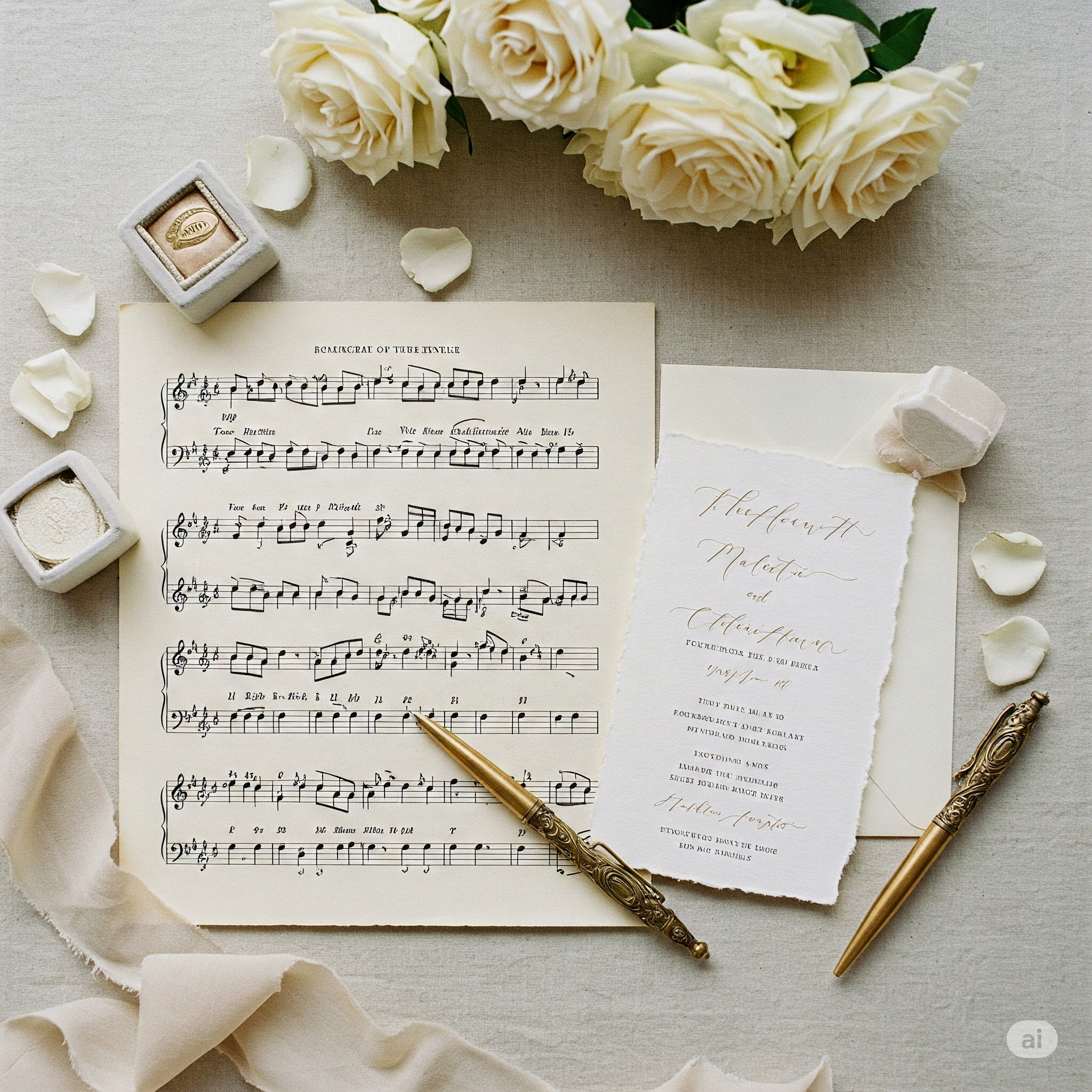Music is the emotional thread that ties your entire wedding day together. A well-structured musical plan ensures smooth transitions and creates a cohesive atmosphere that enhances every moment. Whether you're using a live pianist, a DJ, or a combination, here's a guide to creating the perfect musical flow for your special day.
1. The Prelude (Guests Arriving)
Vibe: Welcoming, gentle, and anticipatory.
This is the first impression your guests will have. The music should be soft and elegant, creating a warm atmosphere without being distracting. Light classical pieces, soft pop instrumentals, or gentle jazz work wonderfully here. As a pianist, I find this is the perfect time for beautiful, atmospheric melodies that set a sophisticated tone.
2. The Processional (The Walk)
Vibe: Emotional, significant, and building.
This is a series of key moments. You'll want distinct musical cues for the seating of parents/grandparents, the wedding party's entrance, and finally, the bride's/partner's grand entrance. The music should build in emotion, culminating in the most powerful and personal song of the ceremony.
(See my full guide to processional music here!)
3. The Recessional (The Exit)
Vibe: Joyful, celebratory, and triumphant!
You're married! The music should reflect this incredible moment. Choose an upbeat, happy song that makes you want to dance back up the aisle. This is the official start of the party.
(Looking for ideas? Check out these unique recessional songs.)
4. The Cocktail Hour
Vibe: Social, upbeat, and sophisticated.
This is the transition from the formal ceremony to the relaxed reception. The music should be lively enough to create a buzz but still allow for easy conversation. This is where a live pianist truly shines, playing a mix of jazz standards, classic pop covers, and elegant instrumentals. The goal is to keep the energy up while maintaining a classy atmosphere.
5. The Dinner
Vibe: Relaxed, warm, and elegant.
As guests enjoy their meal, the music should shift to a more subdued, background role. Think romantic ballads, soft jazz, and beautiful melodies that create a warm and inviting ambiance for conversation. It should complement the dining experience, not compete with it.
6. Key Reception Moments
Vibe: Personal, significant, and celebratory.
You'll need specific songs for key events like the first dance, parent dances (father-daughter, mother-son), and cake cutting. These should be songs that are meaningful to you and your families. The cake cutting song is often fun and sweet, while the formal dances are more emotional.
7. The Open Dance Floor
Vibe: High-energy, fun, and non-stop!
This is where the DJ or a high-energy band takes over. The playlist should build throughout the night, starting with songs that will get all generations on the floor (Motown, '80s hits) and progressing to more current high-energy tracks. The goal is to create a seamless mix that keeps people dancing.
8. The Last Dance
Vibe: Memorable, conclusive, and often romantic or epic.
End the night on a high note. You can choose a slow, romantic song to bring everyone together for one last sway, or an epic, sing-along anthem that leaves everyone feeling euphoric. It’s the final musical statement of your wedding day.
By thoughtfully planning the musical flow for each part of your day, you create a seamless and emotionally resonant experience for both you and your guests. It’s about building a soundtrack that tells your unique love story from the first note to the very last.
Need help crafting the perfect musical flow for your wedding? I'd love to help you plan it.
